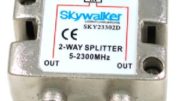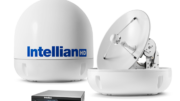Q: When is the best time to upgrade the DIRECTV on your boat?
A: Right before you put it away for the winter.
For many boat owners, fall means the last hurrah for enjoying their watercraft before storing it for the winter. If you’re someone who doesn’t use your boat all year, you know what this entails. It’s the long process of towing your boat to the storage facility so workers there can quite literally pack it up for safe storage. (Many boat owners in states like California don’t have to worry about this.) Like we said earlier, the late fall is the best time to upgrade your vessel’s DIRECTV system.
“But I Don’t Use my Boat in the Winter!”
We know why you said that and it makes sense. If you’re not using your boat during the winter, why would you want to pay for DIRECTV during that time? You’d literally be paying for something that you’re not using… except that you won’t when you work with us. You only start paying when your Signal Connect representative activates your account. We’ll do that in about 10 minutes or less when you get your boat out of storage.
But we’re getting ahead of ourselves…
…Let’s Talk About Your Old Marine Satellite Receiver
A whole bunch of boat owners got DIRECTV between 2004 and 2007. During that time, the DIRECTV receiver technology was brand new. Today, that technology is called “standard definition” or SD. New boats are being outfitted with high-definition and even 4K receivers. Why? Because that’s the latest technology and it offers the best video and audio reception. Hint: it’s light years beyond that old SD programming.
Here’s another thing boat owners need to know about SD technology: it’s probably going away soon. DIRECTV broadcasts its SD content on satellite 119. DIRECTV plans on parking that satellite soon which means one of two things:
-
All local channels will be turned off.
-
Some national SD channels will get shut off.
Do you really want to keep paying for less channels than what you’re already paying for? Because that’s what will happen if you hold on to that old SD equipment. (You don’t want that.) Oh, and something else about those older receivers, it’s hard to find replacement parts for those antiques. Yes, even for an online electronics retailer like us. The technology is constantly evolving and so is the hardware. Rather than continue to make parts for rapidly-aging equipment, the answer here is simple: upgrade your programming and equipment.
…You Need to Call Signal Connect
That’s our division that’s a DIRECTV Authorized Dealer. When you get DIRECTV service and equipment from us, you’ll also get a Signal Connect rep assigned to your account. This is the person you’ll call when you’re getting your boat out of storage. Someone from our installer network would’ve already installed your receiver during the previous fall. Come spring time, you’re Signal Connect rep will help you.
So, what does Signal Connect do for boat owners? Our reps activate accounts faster than any other DIRECTV dealer. That’s because they know who to call at AT&T to get the job done quickly. It might take you or your installer more than an hour to connect with the right person. When you work with Signal Connect, you’ll be watching all your favorite shows the first day your boat hits the water.
Ready to Upgrade Your DIRECTV Receiver?
The whole process is very easy because our Signal Connect division handles most of it. All you really have to do is give us a call at 888-233-7563. Our reps will answer all your questions and walk you through the upgrade process. Don’t have time for a call? Fill out the form below then click “submit.” A member of our team will contact you in one business day or less.





